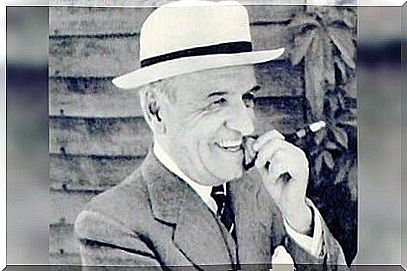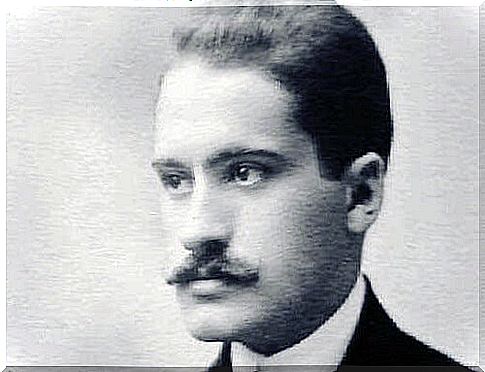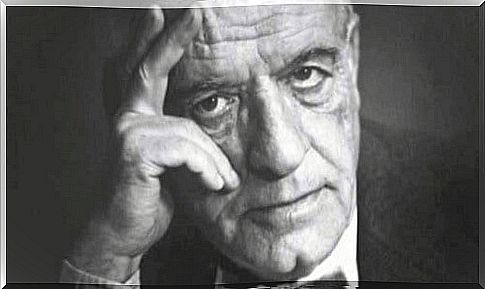José Ortega Y Gasset: Biography Of A Regenerationist Philosopher

José Ortega y Gasset was one of the most prominent Spanish philosophers. Intellectual, essayist, journalist, orator … His liberal and regenerative discourse contained the essences of perspectivism and vital reason. It belonged to the movement of the Noucentisme and the Generation of 14, where there were also figures such as Pablo Picasso or Juan Ramón Jiménez
His most representative works, such as Invertebrate Spain (1921), The Dehumanization of Art (1925) and especially The Rebellion of the Masses (1930), described a very relevant page in our history. From that social and intellectual situation in Europe in the mid-twentieth century. Ortega reflected like no one else the irruption of those liberated masses who finally left the elite aside, to express themselves through art, civic values and a liberal philosophy.
Let’s not forget that this famous philosopher developed his work in a highly complex context. The rise of communism clashed with fascism. Unionism with nationalisms, and in turn, with the popular class. The one that was beginning to make its way through cultural movements and also consumerism.
“I am me and my circumstances and if I don’t save her, I won’t save myself.” This phrase, so representative of José Ortega y Gasset, hinted at the influence of this scenario, where we assume that although human beings cannot control the circumstances that accompany their lives, there is always a certain slack, a space of their own where they can be responsible for ourselves. themselves and generate changes.

José Ortega y Gasset: Biography of a Liberal Philosopher
José Ortega y Gasset was born into a wealthy family in Madrid in 1883. His mother was Dolores Gasset, daughter of Eduardo Gasset, founder of the newspaper El Imparcial, and where his own father, José Ortega Munilla, would later work as director. It was a home very close to philosophy, intellectualism, journalism and also politics.
All this undoubtedly made him not hesitate too much in knowing what his personal path was going to be. He studied philosophy and letters in Bilbao and later he would finish his studies in Berlin. After obtaining the title, he began to work as a professor of psychology and ethics, until 1910 he would pass an opposition to be a professor of Metaphysics at the University of Madrid.
It was from 1920 on when his life as an academic changed course. He founded the Revista de Occidente . It was a vindictive and liberal publication, there where to bring to Spain more innovative intellectual currents, open at the same time as select. Later the translations of the new philosophical trends such as Edmund Husserl or Bertrand Russell would arrive.
José Ortega y Gasset’s objective was as concrete as it was high. He wanted to open up to his country that renewing air that was already breathed in Europe. He wanted the people to wake up, to rebel against conservatism.
The political stage of José Ortega y Gasset
Ortega y Gasset was elected deputy during the Second Republic. Together with Marañón and Pérez de Ayala, he founded the “Association at the Service of the Republic”. He held that position with great hope until little by little, he began to feel certain discrepancies with the wrong direction, which in his opinion, the Republic was taking. However, everything changed in 1936 with the Civil War.
He had no choice but to live in exile. They spent about 10 years seeking refuge in France, Holland, Argentina and Portugal. His return in 1945 allowed him to reconnect with many like-minded intellectuals with whom to continue working. Thus, in 1948, together with Julián Marías, he founded the Institute of Humanities.

From that moment on, his figure once again stood out among the Spanish cultural scene. He was a professor for several classes of philosophy students, he reflected his liberal ideas in various newspapers, books and essays. He founded the newspaper El Sol (1917), the magazine España (1915) and the Revista de Occidente (1923).
Likewise, José Ortega y Gasset was that figure of undeniable relevance who later inspired the generation of ’27. His wake as a regenerationist intellectual, his personal ideology and philosophical principles, crossed borders, reaching not only Europe, but also Latin America.
He died in 1955 at his home in Madrid at the age of 72.
The key work of José Ortega y Gasset: The rebellion of the masses
José Ortega y Gasset was linked to three basic currents. The first was the Noucentisme, a movement for cultural renewal. The second was perspectivism (a concept established by Friedrich Nietzsche that extolled the idea that there is no single truth. Each of us has our own vision).
The third approach that determined his work was an idea developed by himself. It was about vitalism, an idea where to assume the inevitable interrelation between the person and their reality. These pillars were key when writing one of his most representative works, The Rebellion of the Masses (1930).

The danger of a community that does not reason
A backbone aspect that can be seen on every page of The Rebellion of the Masses is the end of conservatism and the beginning of something new that is not always as positive as we can think. In this regeneration that modern life brings, a series of challenges also arise in which the person, that modern and apparently liberated citizen, is obliged to understand.
- In the first place, the concept of “mass” has nothing to do with the term used by Marxists.
- The masses, for Ortega y Gasset, are people who have de-individualized. That is to say, they are no longer isolated or individual figures. They are a community that is often conditioned by their emotions more than their reasons.
- Those masses already appeared in the new democracies of the time. Therefore, even if we leave authoritarianism behind, other dangers arise. Because collectivities can also be aligned by other figures in public life.
- In the book, Gasset made reference to the acts of vandalism that took place in France at the end of the 3rd years. Thousands of young people took to the streets to burn cars, to vent their anger, guided or motivated by other people who sought to “ignite the masses.”
A very present legacy
The rebellion of the masses is a key work of the philosopher José Ortega y Gasset from which emanate, as we see, multiple ideas that have not yet expired. In fact, they are fully topical and invite us to reflect on something that he himself wanted to convey to us: if we act as gregarious groups, democracy itself will be threatened.
We are part of a historical and social context from which we cannot escape. However, we must separate ourselves from those masses who act by instinct, we must act as individual beings, responsible for themselves and always attentive to those who dare to veto their own freedoms.









